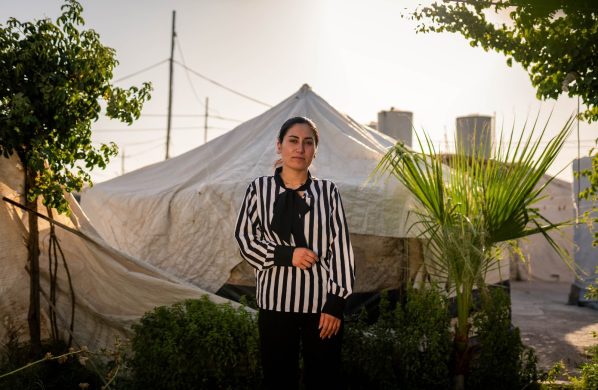Hastig befolkningstilvækst i mellemøstlige lande bliver ikke mødt med tilsvarende vækst i landbrugsproduktionen. Det gør regionen stadig mere afhængig af fødevareimport og sårbar overfor markedschok.
Denne tendens gør det vitalt at booste investeringerne i regionens landbrugssektor, siger FAO Director-General Jacques Diouf tirsdag.
In a speech to the thirtieth FAO Regional Conference for the Near East, held this year in Khartoum, the Sudan, from 4 to 8 December, Diouf noted that while agricultural yields have improved in some countries in the region, its overall productivity lags behind other world areas.
“On average, cereal yields in the Near East are currently about half the world average, and the gap is widening,” he said. “It is projected that the deficit in cereals will more than double between 2000 and 2030. This growing food deficit makes the majority of near eastern countries more dependent on imports and, therefore, vulnerable to shocks in international and domestic markets.”
Water a major challenge
A third major challenge to food security in the region is limited water and land resources, Diouf said.
Per capita availability of renewable water resources in the Near East is currently around 1,050 cubic meters per year, compared to a global annual average of 8,900 cubic meters per person – and that is projected to drop by half by the year 2050.
To deal with this situation, it is vital to boost investment in agriculture, according to the FAO chief.
“Contrary to the period between the 1970s and 1980s, public expenditures on agriculture in the Near East have been very low in the past few years, particularly in relation to the contribution of agriculture to gross domestic product (GDP),” said Diouf.
“While the share of agriculture in GDP is about 12 percent for the region, its share in national public expenditures does not exceed 5 percent.”
“The prevailing conditions in the region look more encouraging for economic cooperation and investment compared to the second half of the 20th century. Increased intra-regional cooperation, through increased trade and investment, continues to generate a great interest in the Near East,” he said.
A mosaic of countries
The Near East Region is characterized by a mosaic of very different countries – 30 in all – in terms of natural resource availability and socio-economic conditions.
As a result, “huge disparities” exist among the countries of the region in terms of the level and prevalence of undernourishment and in progress towards meeting the Millennium Development Goals, Diouf said.
Conflict zones, notably Afghanistan, the West Bank and Gaza Strip, Iraq, Somalia, the Sudan and Yemen, are sources of “serious concern,” he added.
Overall, the number of hungry and undernourished people in the Near East region is currently estimated at 37 million, according to FAO’s latest figures.
This represents an increase of 17 million people from 1996 levels, but is 5 million fewer hungry people than in 2009.














